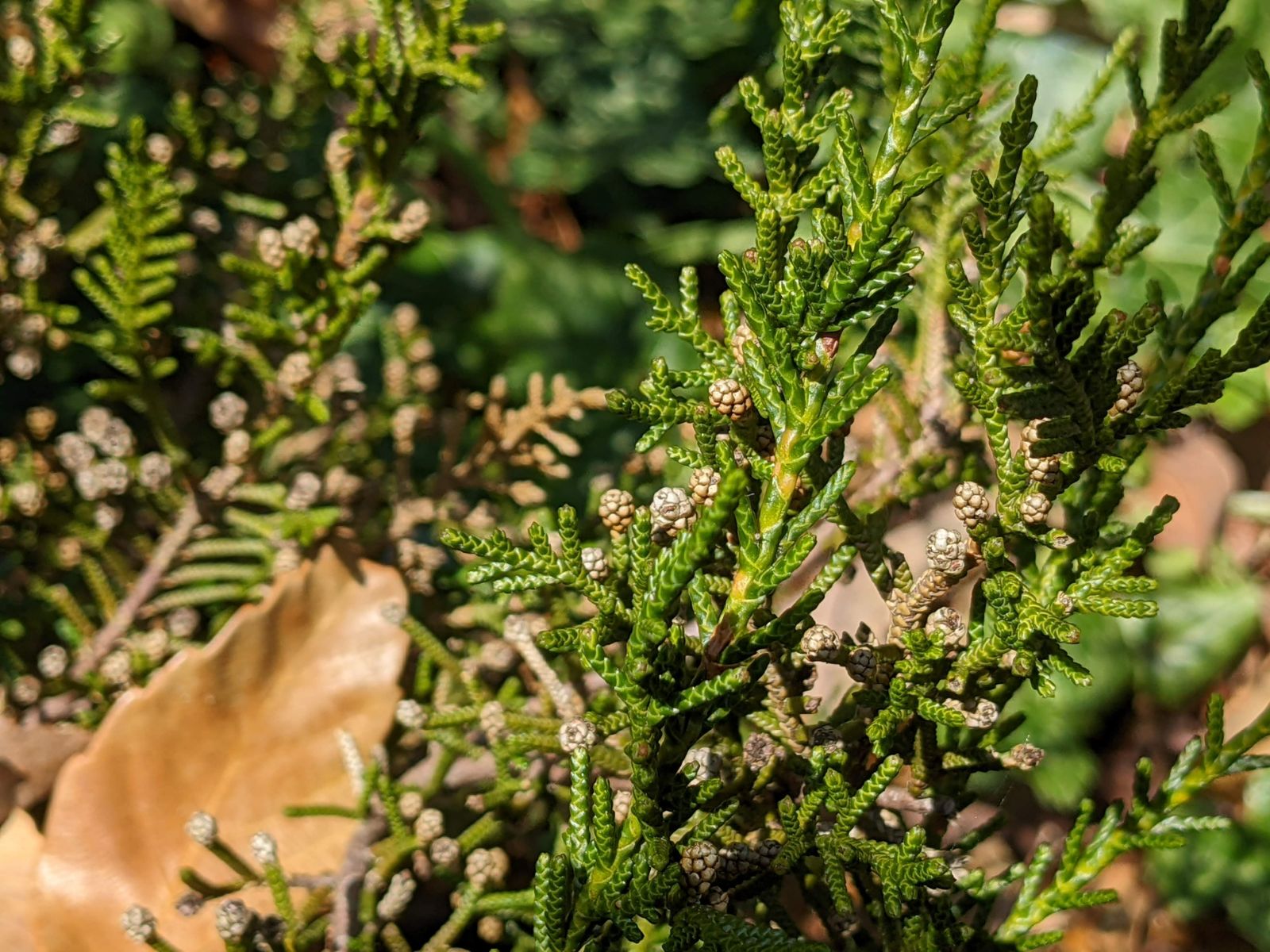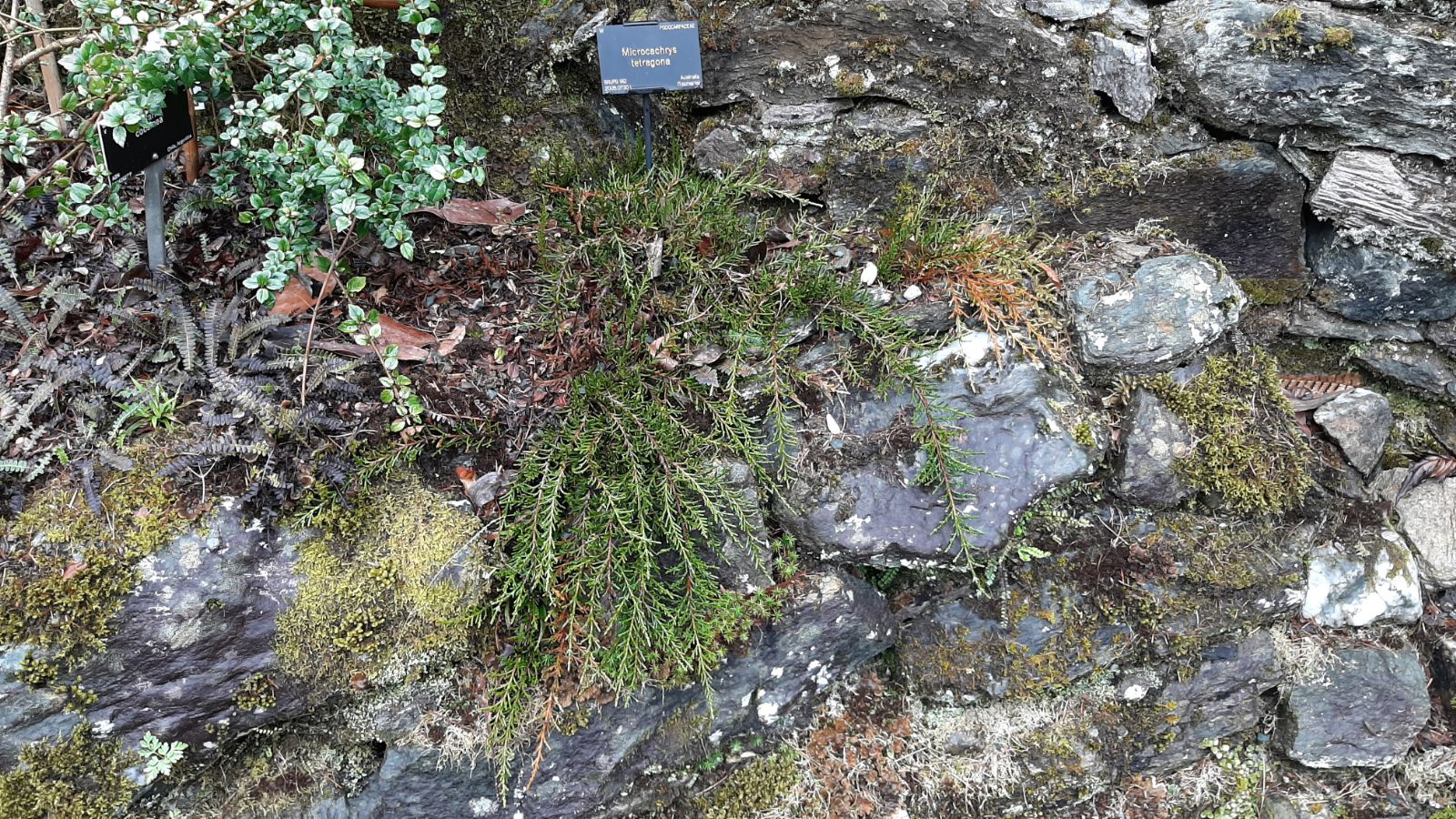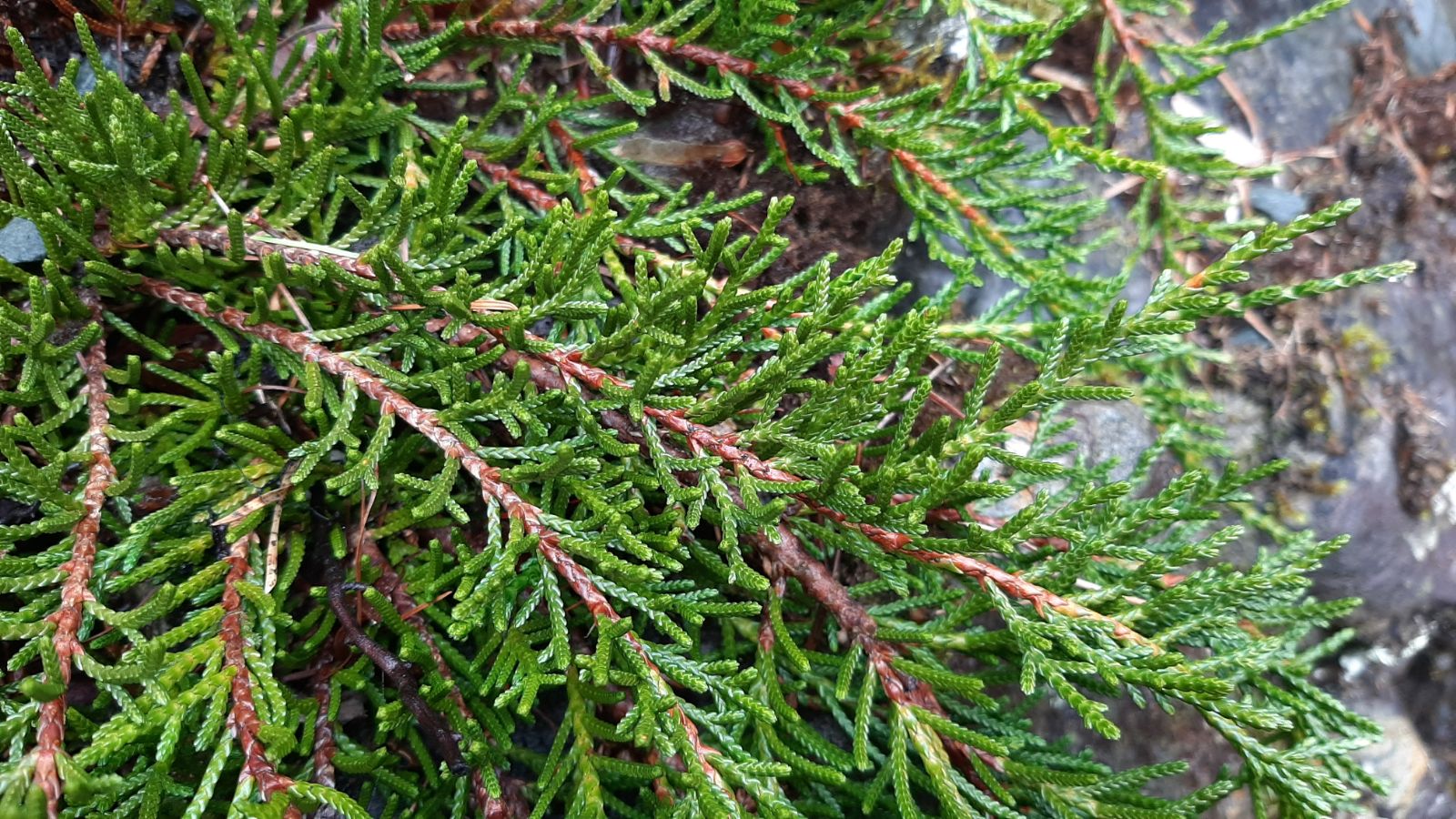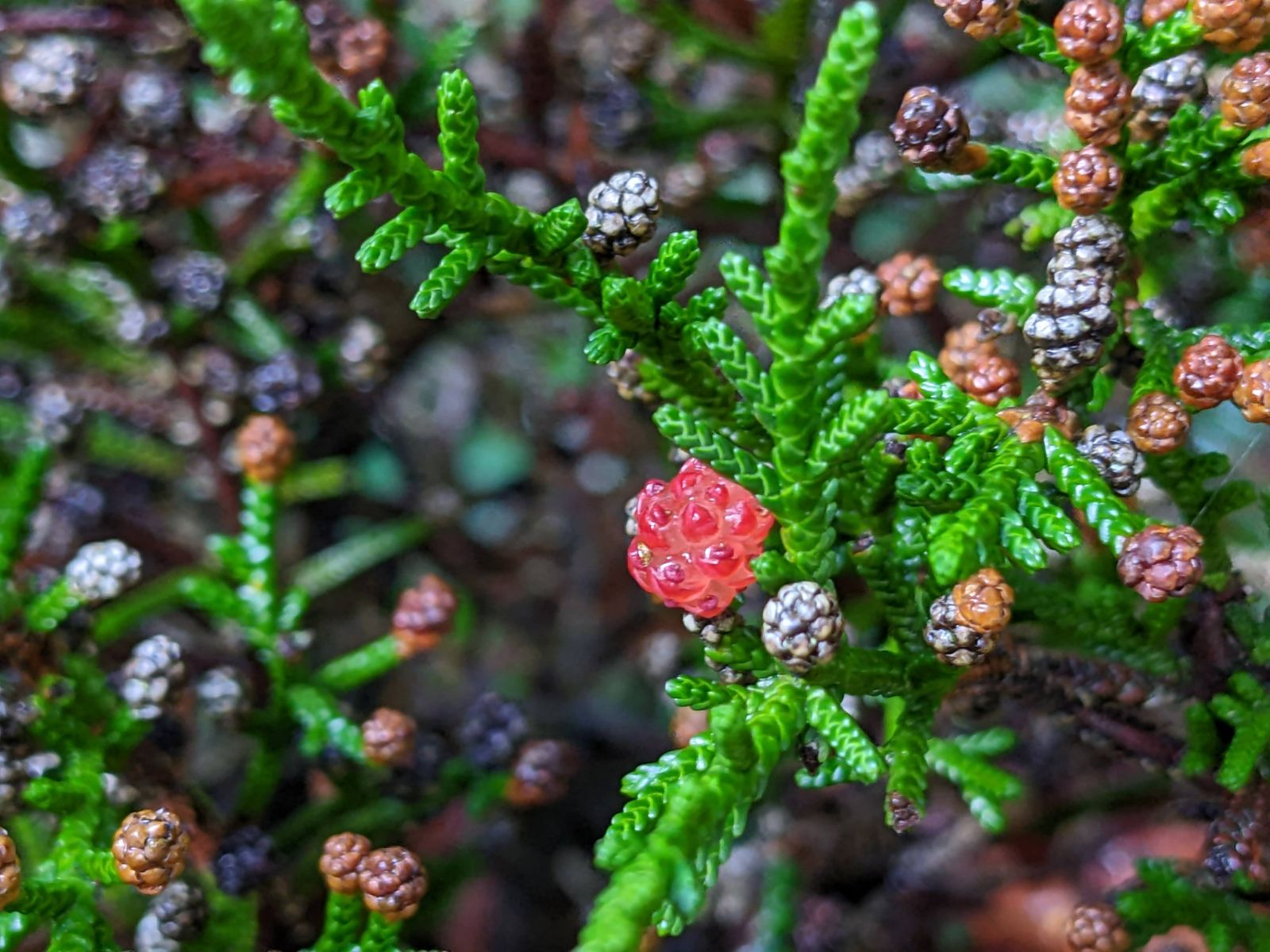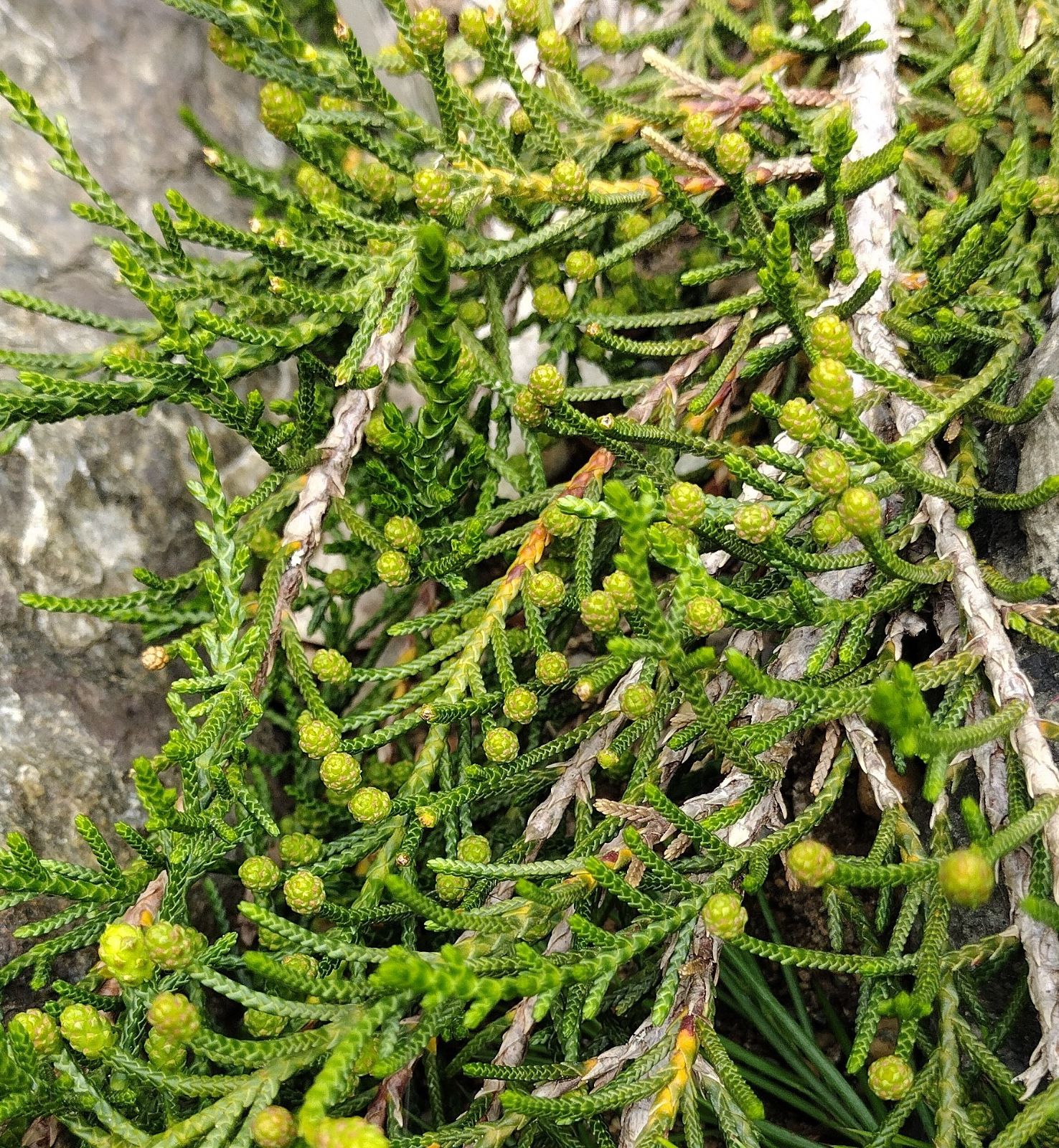Microcachrys tetragona
Credits
Article from Bean's Trees and Shrubs Hardy in the British Isles
Recommended citation
'Microcachrys tetragona' from the website Trees and Shrubs Online (treesandshrubsonline.
Genus
Synonyms
- Dacrydium tetragonum (Hook. f.) Pari.
Other taxa in genus
An evergreen shrub with slender four-angled branches, growing prostrate on the ground or against rock faces. Leaves scale-like, regularly four-ranked, appressed and overlapping, acute at the apex, about 1⁄16 in. long. Cones terminal on short side-shoots. Male cones oblong or ovoid, small. Fruit-cones ovoid or globose, with twenty or more fertile scales which become fleshy, translucent and red-coloured when the fruits are ripe. Each seed partly enclosed in a red aril. Bot. Mag., t. 5576.
Native of the mountains of Tasmania, to which it is endemic; introduced in 1857. It has never been common in gardens, but was at one time grown in conservatories for its colourful fruits and for the graceful habit it assumes if the main stem is trained into an upright position. It is, however, much hardier than was once believed. Mr Will Ingwersen tells us that a plant at the Birch Farm nursery near East Grinstead, Sussex, has lived for at least ten years on a north-facing terrace-bed and was uninjured in the bitter winter of 1962–3.
Most works state that M. tetragona is dioecious, but fruits are produced on female plants without pollination and it may be that some individuals bear flowers of both sexes. Mr Ingwersen tells us that some years ago a pot plant growing in an alpine house at his nursery produced fertile seeds from which young plants were raised, although there was no other specimen within one hundred yards of it.
M. tetragona received an Award of Merit when shown by Messrs Ingwersen on 5 January 1971.

